#american art pottery
Explore tagged Tumblr posts
Text

#roseville pottery#american art pottery#1940s art pottery#vintage home decor#1940s style#roseville foxglove
0 notes
Text

Clay vessel in the form of a tapir
Costa Rica, Ceiba Rojo Café type, 800-1550
15.5 x 9 x 12.8 cm
Staatliche Museen zu Berlin, Ethnologisches Museum IV Ca 48529
#animals in art#ceramics#pottery#animal effigy#effigy vessel#Costa Rican art#Central American art#Indigenous art#clay#pot#tapir#Staatliche Museen zu Berlin
384 notes
·
View notes
Text

growth (nature) by kevin mcnamee-tweed, 2023, glazed ceramic, 8.9 × 10.8 centimeters
954 notes
·
View notes
Text
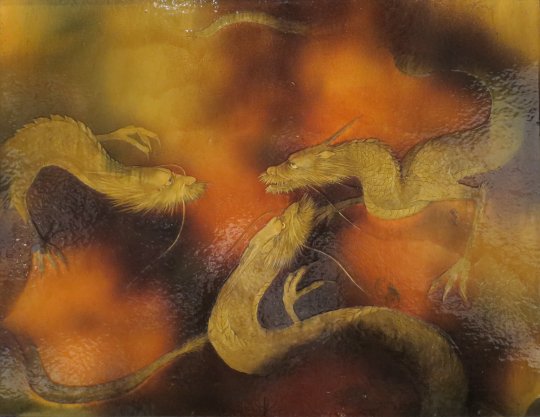
A Trinity of Dragons: Fire, Earth, and Water, Rookwood Pottery Co., 1892
#art#art history#ceramics#pottery#dragons#Chinese dragons#Rookwood Pottery Company#American art#19th century art#Cincinnati Art Museum
901 notes
·
View notes
Text
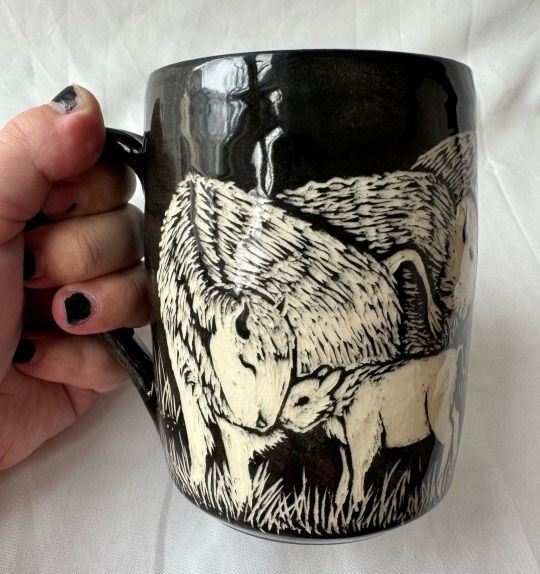
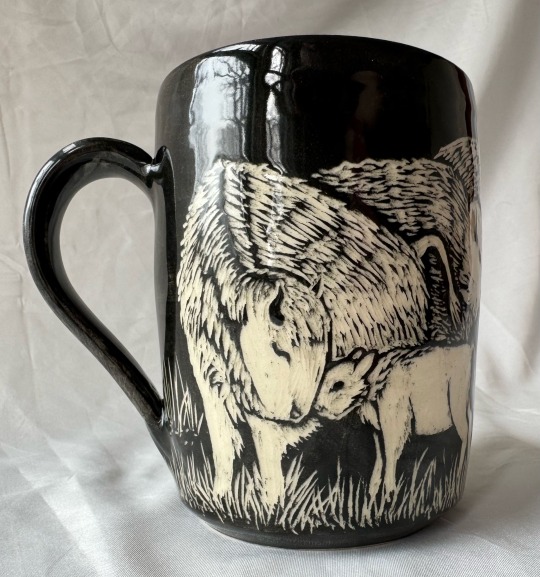
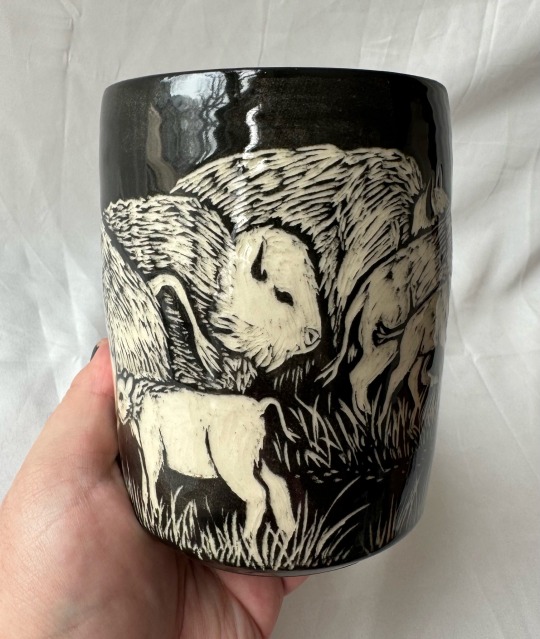
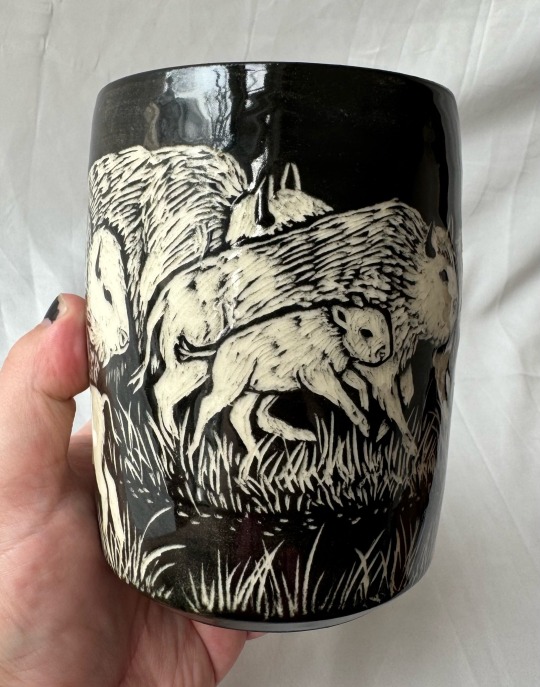
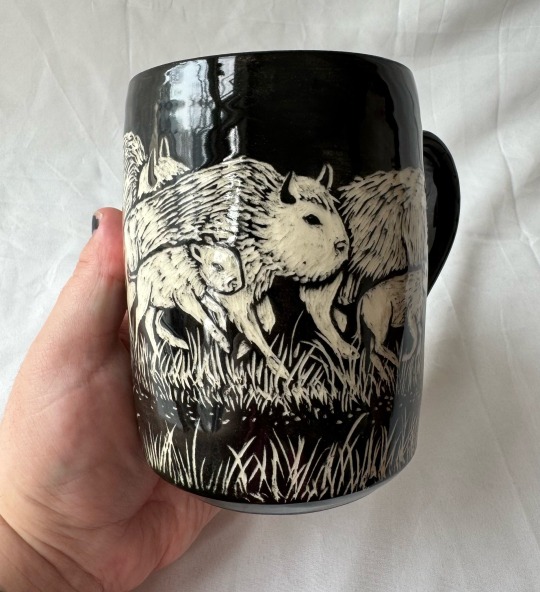
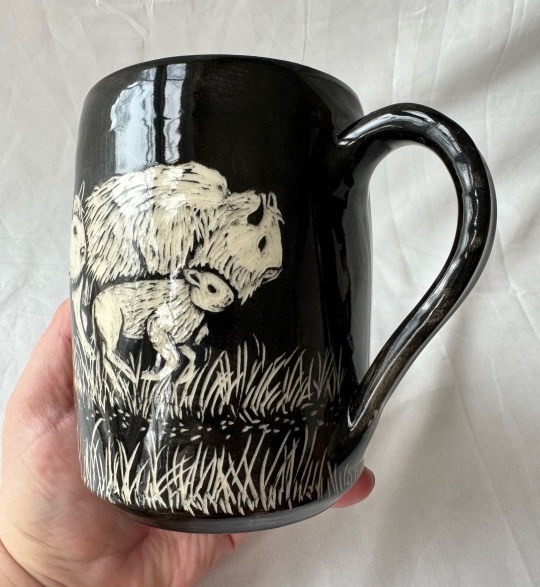
sold
combined two different bison designs on this mug. I really enjoy carving that shaggy bison fur
and a surprise underneath
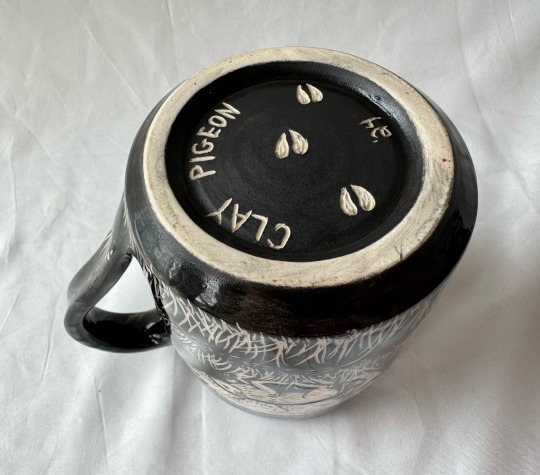
#bison#plains bison#north american animals#pottery#ceramics#ceramic#ceramic art#sgraffito#carving#ceramic mugs#mug#glazeware#claypigeon
486 notes
·
View notes
Text

Acadian Flight to Egypt (2024), colored pencil and ink on paper
I don't tend to post my artwork online, but I was so pleased with how this turned out and I wanted to share it.
#i'd worry about how i don't have a watermark or anything#but it's a very poor quality photo so i doubt anyone will try to steal it#religious art tag#christianity tag#joseph the guardian#mary theotokos#the messiah#art by me#live from the scriptorium#it was. very difficult to find a reference for a man poling a pirogue that i liked. but God is good and i did find one.#some additional trivia:#the decision to use louisianan animals as symbolism was inspired by laura fragua-cota#(who did that with southwestern american animals in a pottery nativity from 2000)#the pelican is a symbol of sacrificial love in western european art#the snake (symbolic of the devil in christian art) is a water moccasin. stories from family folklore ties it to childhood danger in my mind
47 notes
·
View notes
Text

𝚋𝚎𝚝𝚝𝚎𝚛 𝚒𝚏 𝚠𝚎 𝚍𝚘𝚗'𝚝 𝚔𝚗𝚘𝚠
#mine#photography#art#aesthetic#love#dream#southern gothic#appalachian gothic#rural gothic#american gothic#tn#tennessee#rural#rural aesthetic#rural america#americana#appalachia#appalachian#ruralcore#digicam#kodak#lofi#lofi aesthetic#minimalism#minimalist#original photographers#photographers on tumblr#dreamcore#interior#pottery
17 notes
·
View notes
Text
So we’re all watching The Great Pottery Throw Down, yes?
Whatever formula or drug these producers slipped into this show and the baking show is absurdly intoxicating.
I’ve switched soggy bottoms for cracked pots.

#spilled thoughts#reflection#thought#great british bake off#the great pottery throw down#pottery#potter#clay art#calming tv#calming#new obsession#wind down#comfort show#soggy bottom#ceramics#why do British accents make things so peaceful#yes I realize I am a simple American
12 notes
·
View notes
Text

Ceramic jar, Ancestral Pueblo, circa 1250-1300
from The Dallas Museum of Art
111 notes
·
View notes
Text
0 notes
Text



Stirrup-spout bottles in the form of a duck and a puma, c. 1100-1400 CE
Chimú (Peru, North coast)
Ceramic (blackware pottery)
Smithsonian NMAI 23/6883, 23/190
#animals in art#birds in art#bird#duck#puma#feline#wild cat#Andean art#Peruvian art#Sourh American art#Indigenous art#Chimu art#Smithsonian NMAI#pottery#ceramics#blackware#animal effigy#effigy vessel#pair#museum visit
306 notes
·
View notes
Text







Konduri and Santarém pottery styles
"Konduri (11th-15th AD) and Santarém (13th-16th AD) pottery styles occur in neighboring areas of the Lower Amazon and are both part of the Incised and Punctuate Tradition. ‘Necked vessels’ are among the most emblematic types of pottery in the Santarém style. These vessels typically have a constricted neck with a flange, pedestal base, and lobed body, generally with two pairs of zoomorphic adornos arranged in a perpendicular manner. This study challenges the assumption that this type of vessel was exclusively associated with Santarém pottery. Diagnostic traits to recognize necked vessels from isolated potsherds were defined based on analysis of complete specimens from Santarém. Hundreds of Konduri potsherds were directly analyzed or observed from available publications in order to identify diagnostic traits indicating the existence of necked vessels. Necked vessels from Konduri contexts were seen to have their own distinct characteristics involving particular incised patterns which differ from Santarém. The presence of such a distinct type of vessel on a regional scale reinforces previous suggestions based on ethnohistorical and archaeological studies of the existence of social interactions between the producers of Santarém and Konduri pottery.
Complete article and image source here.
#art#culture#brazil#brazilian#museum#brazilian artists#indigenous#indigenous american#indigenous art#anthropology#ancient history#ancient#ceramic art#ceramic#ceramic sculpture#pottery#carving#native american#indigenous people#indigenous rights#article#art style
12 notes
·
View notes
Text



did a bunch of studies of Hopi pottery motifs
there's an interesting way that the potters use logrithmic curves and dramatic differences in mass that i find appealing. I think there's also a compositional scheme not based on the rule of thirds going on. it's more extreme in tension and i dont know what the relationship is.
2 notes
·
View notes
Text



one commission down! looking forward to seeing the colours on this one once it’s glazed
#reserved#pottery#ceramics#ceramic#ceramic art#sgraffito#carving#underglaze painting#mugs#coffee mugs#robin#american robin#bird art#greenware
283 notes
·
View notes
Text

About me
18
ADHD + Dyslexia
She/Her
My special interests include Art, Dolls, and History
My music taste is always changing but right now my fav bands are Arctic Monkeys, Gorillaz, and Cigarettes After Sex
I have a large doll collection (mostly Monster High and American Girl)
I am a potter and love pottery
Mutuals
@spaceulaura ⋆。°✩ it was supposed to be FOREVER
thanks for reading

#doll collector#doll collection#american girl#ag dolls#doll community#monster high dolls#american girl doll#dolls#art#artist#pottery#aesthetic#dark aesthetic#dark academia
6 notes
·
View notes
Text

santa fe, nm 🌵
#pottery#weird art#art show#original art#pot#pots#weird#pueblo#pueblos#Navajo#Native American#antiques#antique#actually mentally ill#actually bipolar#actually borderline#actually bpd#borderline personality disorder#bipolar 1#bipolar 2#sadgirl#bpd#sad thoughts#New Mexico#Santa fe#asadgirlwithaprettymind
3 notes
·
View notes